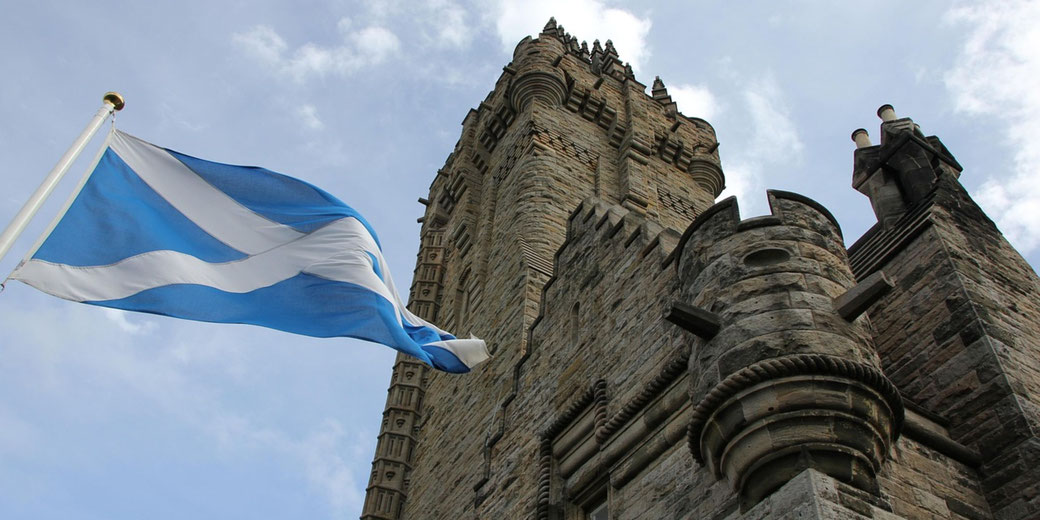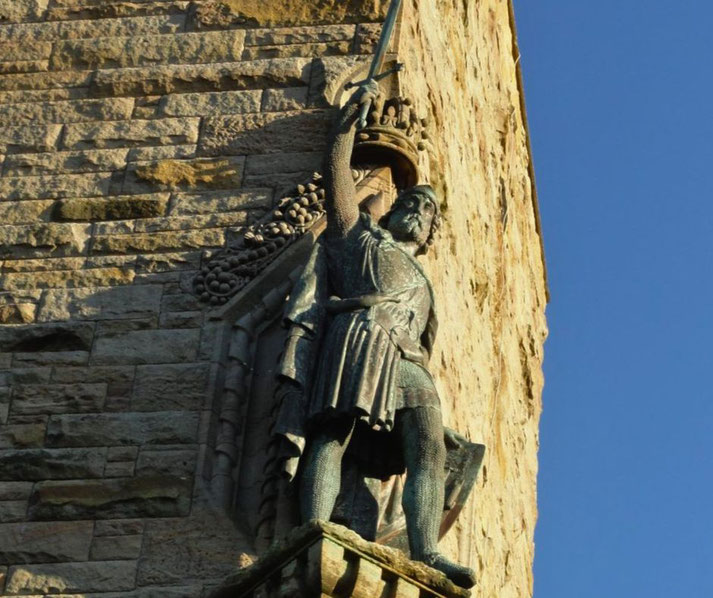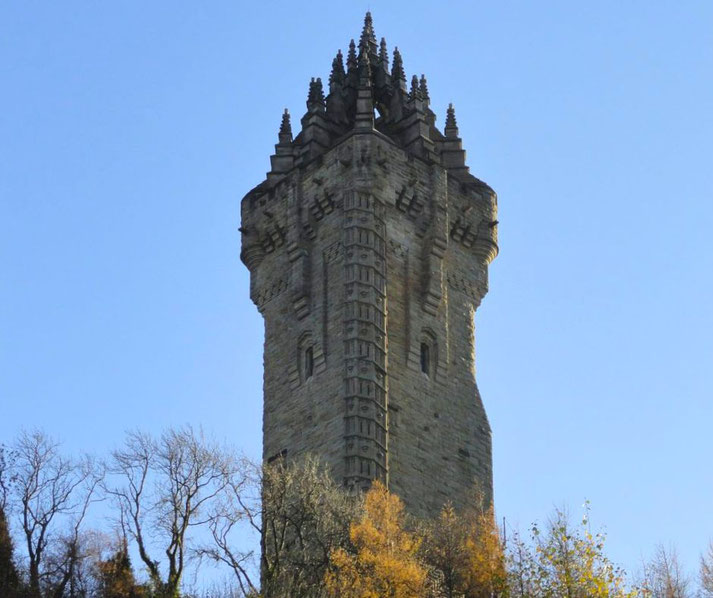The real history of William Wallace, Scotland's medieval freedom fighter

The collapse of royal authority in Scotland at the end of the 1200s left a gap quickly filled by foreign intervention accompanied by conflict and resistance.
Into this unstable world stepped William Wallace, a figure whose story has become central to Scotland’s long history of independence.
Apart from folklore's romance, his real-life actions speak to a desperate and determined campaign against occupation, one that continues to inspire Scottish memory.
Early life and childhood
Around the year 1270, William Wallace was born into a minor noble family. Most sources suggest his birthplace was Elderslie in Renfrewshire, though others argue for Ellerslie in Ayrshire, a claim with less historical support.
His father, believed to be Sir Malcolm Wallace, held land but is not documented among the high aristocracy, though later tradition places him among the minor nobility.
Wallace’s family was part of the lower gentry, which meant he would have enjoyed the rights of a landowner without wielding significant political influence.
By the practices of his class, Wallace likely received an education from the Church, as was typical for someone of his class, though no direct evidence survives.
He probably learned Latin and basic law and would have trained in the use of weapons expected of a young nobleman.
Very little evidence survives about his youth. Most surviving details come from the 15th-century epic poem The Wallace by Blind Hary, a text that mixes historical information with creative storytelling.
According to Hary, Wallace was unusually tall and showed signs of exceptional bravery from an early age, but these details cannot be confirmed by earlier sources.
The political crisis of 13th century Scotland
Following the death of King Alexander III in 1286, Scotland faced a succession crisis. Alexander’s only heir, his granddaughter Margaret of Norway, died before she could be crowned.
With no clear successor, thirteen rivals competed for the throne. The Scottish nobility invited King Edward I of England to arbitrate the dispute, and in 1292 he selected John Balliol as king.
However, Edward demanded that Balliol accept him as overlord and repeatedly weakened his authority.
By 1296, Edward had lost patience with Balliol’s efforts to assert Scottish independence.
He invaded Scotland, forced Balliol to abdicate, and placed the kingdom under direct English control.
The English occupation saw English officials seize key castles and collect taxes while also overseeing local administration.
Many Scottish nobles submitted to Edward, but others began to resist. This background of shame and foreign control created the conditions in which Wallace rose up as a leader of rebellion.
Why did William Wallace rebel?
Accounts from the early 14th century, such as the Chronicle of Lanercost, describe Wallace as a man who refused to submit to English rule.
The exact reason for his decision to take up arms remains unclear, but it is likely tied to personal complaints, a strong belief in Scottish independence, and anger at English authority.
Some traditions suggest English soldiers killed a relative of Wallace, possibly his father or brother, which may have triggered a desire for revenge.
However, there is no direct evidence of this event in contemporary records.
By early 1297, Wallace had begun attacking English military posts and officers in central Scotland.
His most significant early action was the killing of the English sheriff of Lanark, William Heselrig.
Wallace and his small band then carried out a series of raids across the countryside.
These raids targeted those working with the English. His campaign quickly gained followers, particularly among men frustrated with the obedient Scottish nobles.
As trouble spread, Wallace came into contact with other rebel leaders, including Andrew Moray in the north.
The Battle of Stirling Bridge
On 11 September 1297, Wallace and Moray led a joint force of Scots to face an English army near the River Forth at Stirling Bridge.
The English commander, John de Warenne, Earl of Surrey, attempted to move his troops across a narrow wooden bridge to engage the Scots on the opposite bank.
Wallace and Moray waited until part of the English army had crossed. They then launched a sudden and focused attack.
The narrow crossing created chaos among the English ranks. Once the bridge became congested, the Scots struck with destructive force.
English cavalry and infantry were driven back into the river, and many drowned as they attempted to flee.
The English lost thousands of men. Scottish casualties were far lower. Moray was wounded in the battle and later died.
This outcome left Wallace as the sole military leader. The victory at Stirling Bridge shocked Edward I and temporarily forced English forces to retreat from much of Scotland.
Appointment as 'Guardian of Scotland'
After the success at Stirling, Wallace gained broad support from the remaining Scottish nobility.
In late 1297, he was formally appointed ‘Guardian of Scotland’ in the name of the exiled King John Balliol.
This title made Wallace the head of the temporary government and leader of the Scottish resistance.
He worked to strengthen Scottish defences, issued royal charters, and attempted to form relations with European powers, including France.
Despite his military success, Wallace struggled to unify the Scottish nobility. Many aristocrats had their own interests and resented Wallace’s rise to prominence.
His base of support came mostly from knights, lesser landowners, and commoners.
His efforts to continue the fight required resources, and Wallace launched a brief campaign into northern England in early 1298.
It achieved some local victories but did not produce a long-term advantage and did not draw support from other parts of Britain.
The Battle of Falkirk
Edward I returned to Scotland in the summer of 1298, set on defeating the rebellion.
With a much larger army, which included longbowmen, cavalry, and mercenaries, the English king marched north.
On 22 July 1298, Wallace's forces met Edward’s army near Falkirk. Wallace arranged his troops in circular formations known as schiltrons, which used long spears to defend against cavalry.
Initially, the schiltrons held their ground, but Edward’s archers broke up the Scottish lines.
English knights then charged the weakened formations, and Wallace’s army was overrun.
Many Scottish soldiers were killed, and Wallace was forced to retreat. The defeat at Falkirk ended Wallace’s position as Guardian.
He either resigned or was forced out by the Scottish nobles, who replaced him with a group that included Robert the Bruce and John Comyn.

William Wallace's capture and execution
After he lost his office, Wallace left Scotland for a time. He travelled to France in an attempt to gain foreign support.
Some later sources suggest he may have reached Rome to appeal to the Pope, but this is uncertain.
By 1304, he had returned to Scotland, where resistance had decreased. Many former allies had submitted to Edward; Bruce was among them.
Wallace, however, continued his actions underground. The English offered a reward for his capture, and in August 1305, he was betrayed by a Scottish knight, Sir John Menteith, near Glasgow.
He was transported to London and tried for treason in Westminster Hall. Wallace denied the charge and stated that he had never sworn allegiance to Edward.
The trial was only a procedure. On 23 August 1305, Wallace underwent hanging before he was drawn and quartered.
His head was displayed on London Bridge, and his limbs were sent to Newcastle, Berwick, Stirling, and Perth.
The harshness of his death was intended to discourage further rebellion, but it instead turned Wallace into a martyr for Scottish independence.
His actions inspired later struggles, especially those led by Robert the Bruce, and ensured Wallace was remembered in Scottish history.

What do you need help with?
Download ready-to-use digital learning resources
Copyright © History Skills 2014-2025.
Contact via email
With the exception of links to external sites, some historical sources and extracts from specific publications, all content on this website is copyrighted by History Skills. This content may not be copied, republished or redistributed without written permission from the website creator. Please use the Contact page to obtain relevant permission.





